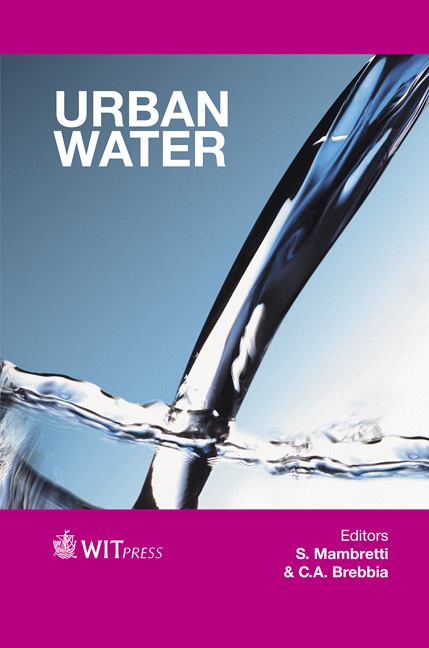A Demonstration-scale Evaluation Of GAC As Biologically Removing TOC From Drinking Water In Alabama
Price
Free (open access)
Transaction
Volume
122
Pages
7
Published
2012
Size
1,782 kb
Paper DOI
10.2495/UW120111
Copyright
WIT Press
Author(s)
A. Nabors, J. Heberling, P. Barron & J. Shotts
Abstract
Granular activated carbon (GAC) media for filtration of drinking water can be used to remove microscopic substances at extremely effective rates though a process of adsorption. Two major problems with GAC are the high start-up costs and the short effective removal timeline before GAC replacement or reactivation. Three years ago, the Birmingham Water Works Board (BWWB), undertook a project sponsored by the Water Research Foundation (WRF) to evaluate GAC for removal of organics, pharmaceuticals, and pesticides. These results were published in December 2010. A primary coagulant change at the plant occurred shortly after the initial study and a spin-off study commenced. The GAC filters are continuously monitored for any significant changes in performance. Grab samples including total organic carbon (TOC), heterotrophic plate counts, and nitrates are collected and sent for analysis. Initial results show there is still significant reduction in TOC through the filters. This is important because previous research suggests the media has an adsorption timeline of approximately six months after which GAC media was determined to be biologically active. If GAC is effective at removing organics several years after installation through biofiltration which doesn’t require reactivation, it may be a cost effective alternative to current procedures enabling BWWB to meet future regulations on drinking water. Keywords: granular activated carbon, total organic carbon, drinking water, organics removal, filtration media, ferric sulfate, disinfection by-products.
Keywords
granular activated carbon, total organic carbon, drinking water, organics removal, filtration media, ferric sulfate, disinfection by-products





